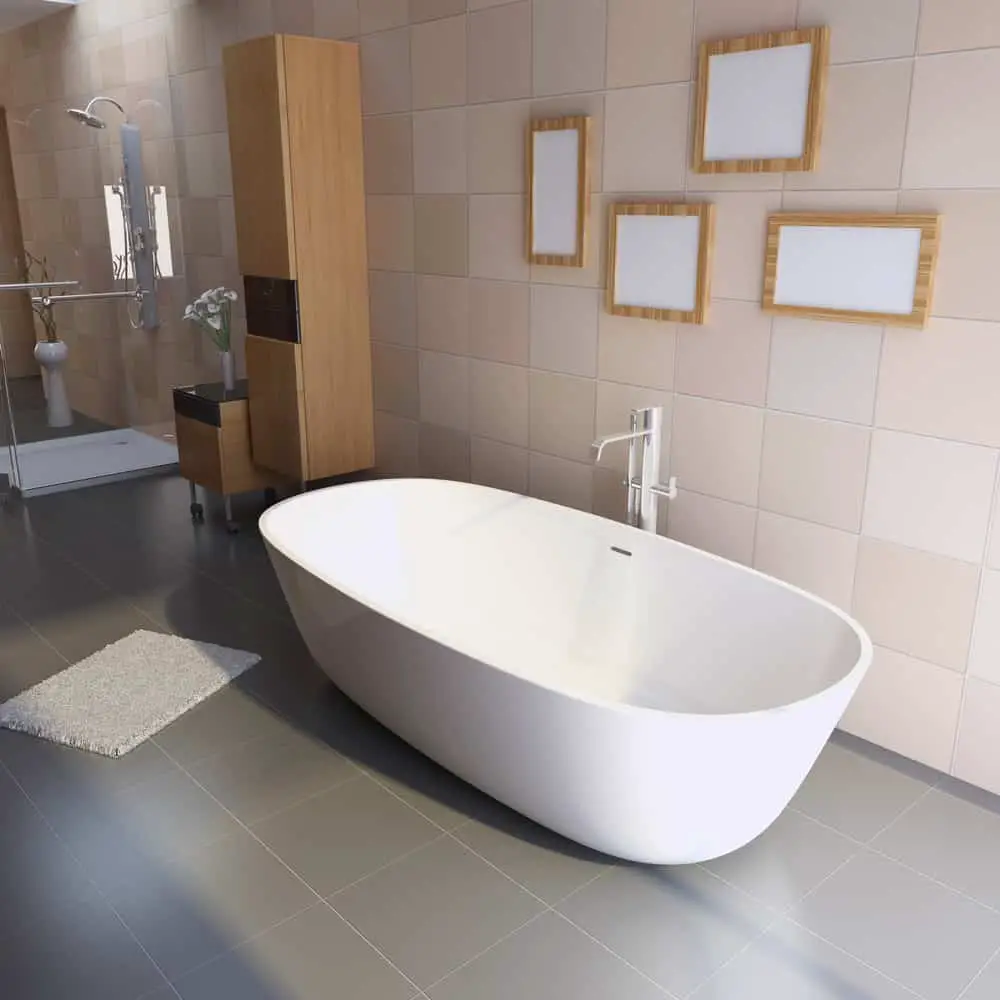Individual shut-off valves are required for nearly all home plumbing fixtures, except for bathtubs and showers.
Regardless, Do Bathtubs Have Shut-off Valves?
Yes, bathtubs usually have shut-off valves. Although the formal building codes do not mandate dedicated shut-off valves for bathtubs and showers, most professional plumbers usually install shut-off valves for bathtubs. Installing bathtub shut-off valves is a good idea as they are handy in providing the much-needed convenience to shut off water supply lines when repairing or replacing components of your bathtub.
See Also: Can You Replace A Bathtub In A Mobile Home?
All in all, it is worth noting that some builders and plumbers skip installing bathtub shut-off valves to save their profits. Others fail to install the hardware to maintain aesthetics.
Of significance, it is a good idea to have shut-off valves for your bathtubs.
In this post, you will find more about bathtubs and other essential notes on the topic.
Do All Bathtubs Have Shut-off Valves?
There is no denying that the building codes do not mandate individual shut-off valves for bathtubs and showers.
However, considering that bathtubs, just like other plumbing fixtures, may start leaking, necessitating repairs and replacements, it is important to know if your bathtub has a shut-off valve.
Well, while we all know that shut-off tubs make it convenient to stop water supply when repairing or replacing plumbing fixtures, it is so unfortunate that not all bathtubs have shut-off valves.
As such, it is probable that your shower or bathtub doesn’t have a shut-off valve.
Before concluding that your bathtub or shower doesn’t have a shut-off valve, make sure to check all possible locations where your tap could be placed.
Some plumbers elect to conceal the shut-off valve or not to install a shut-off valve to preserve aesthetics, as having the valve on the wall would still not look too cool.
Water shut-off valves can be placed inside or outside the apartments.
While it is also not uncommon for a bathtub valve to be on the other side of the wall, here are common places where your bathtub shut-off valve can be placed:
1. In An Access Panel
A bathtub shut-off valve can be placed behind an access panel that’s built in the wall. If you have a manufactured home, it is likely that you will have an access panel.
2. Under the tub in the basement or crawl spaces
Unfinished basement or crawl spaces are ideal places where a bathtub shut-off valve can be placed.
Plumbers install valves on the horizontal pipes running between exposed joists below the bathtub.
If you have a removable ceiling in the basement right below the bathroom, be sure to check if the plumber installed a valve there.
3. At The Central Manifold
If your home’s plumbing system is made with PEX plumbing tubing, your bathtub shut-off valve can be put at the central manifold, usually near the main shut-off valve.
Whether you own a manufactured home or a site-built home, you will have one main water cut off, usually placed in the utility room.
Importantly, if you find out that your bathtub doesn’t have a shut-off, it is a good idea to consider installing one. Considering that most pipes supplying water to your bathtub are in the walls and cannot be readily serviced in case of a leak, a valve will become handy when repairing or replacing parts. It will allow you to service the tab without necessarily shutting the water off to the whole house.
Why Would You Need A Bathtub Shut-off Valve?
At its core, a shut-off valve is hardware that regulates water floor to plumbing fixtures, in this case, a bathtub.
As such, a bathtub shut-off valve is a hardware that helps you to safely control the flow of water to your bathtub without affecting the water supply to other fixtures.
While a shower or bathtub valve can be very handy, it is not required by the code.
This is probably because bathtubs are enclosed by walls and floors, so the pipes are not immediately accessible – code requires fixture shut-off valves to be accessible.
All in all, safe shower and bathtubs valves are integral components of your home’s water system, and you will definitely find them useful at some point in your stay there.
In the event of leaks, burst pipes, or loose water supply connections, you will appreciate having a shut-off valve for your bathtub.
This hardware allows you to replace parts of your bathtub or carry on renovations and repairs without cutting off the water supply to the entire house.
Depending on where you live, installing a shut-off valve could be required by the local building code. Definitely, this means you will need a separate valve to comply with those local codes.
The key function – providing a convenient place to cut off water supply during repairs and when replacing parts – is the core reason you need a shut-off valve for the bathtub.
Conclusion
Bathtub shut-off valves are incredibly useful elements in your home’s plumbing systems.
If you do not have a dedicated valve for your bathtub, the good news is that installing one does not require any specialist skills.
Hopefully, after reading this post, you can select an ideal place for your bathtub and install it.

